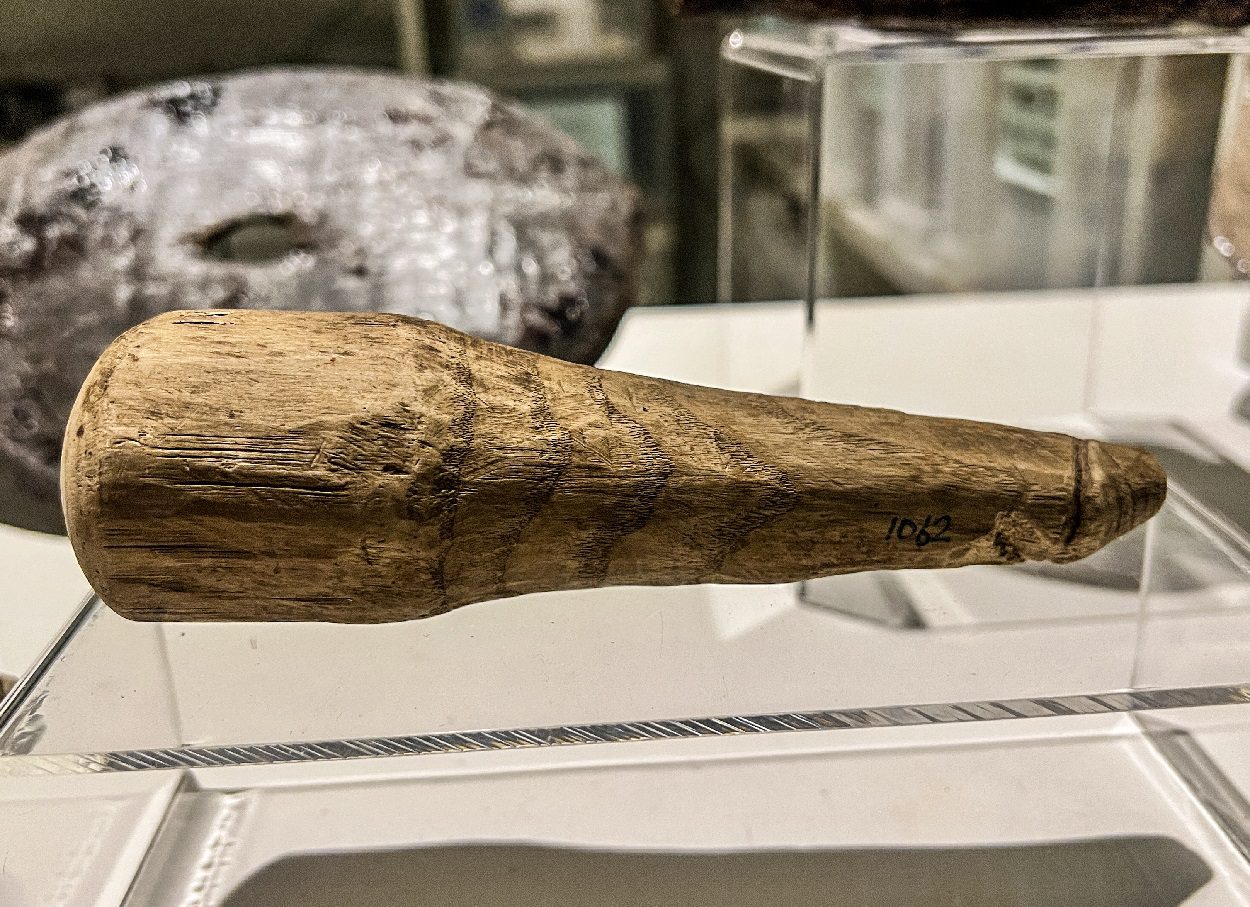Archaeologists excavating at the Roman fort of Vindolanda have found a phallus made of wood, which may have been a Roman sex toy from almost 2,000-years-ago.
Vindolanda (translated as “white field” or “white moor”) was a Roman auxiliary fort, situated on the fringes of the Roman Empire near Hadrian’s Wall to guard a major highway called the Stanegate.
No less than nine Roman forts were built of timber or stone at Vindolanda from around AD 85 to AD 370, creating one of the most complex archaeological sites in Britain and a unique cultural legacy of frontier life.
The phallus was initially thought to be a darning tool, as it was uncovered in a 2nd century fort ditch alongside the remains of leather shoes, dress accessories, small tools and leather waste cut-offs.
However, a new analysis by researchers from Newcastle University and University College Dublin, have now suggested that the wooden artefact is a disembodied phallus used as a sex toy, the first known example discovered anywhere in the Roman world.
The Roman’s believed that the phallus was the embodiment of a masculine generative power, and was one of the tokens of the safety of the state (sacra Romana) giving protection and good fortune.
Across the length of Hadrian’s Wall and at military installations, 59 known etchings of male genitalia, otherwise known as a fascinus or fascinum were carved at various locations to symbolise the male phallus.
They were also often depicted in painted frescoes and mosaics, or formed part of the decoration of other objects such as being embellished onto a knife handle or incised into pottery. Small, portable phalli made of bone or metal were commonly worn as pendants around the neck.
In a study published in the journal Antiquity, the researchers explore three possible explanations for the phallus’ purpose – One being a sexual implement, another as a pestle, and the third being ornamental in function which could be slotted into a statue.
Dr Rob Collins, Senior Lecturer, Archaeology, Newcastle University, explains: “The size of the phallus and the fact that it was carved from wood raises a number of questions to its use in antiquity. We know that the Romans and Greeks used sexual implements – this object from Vindolanda could be an example of one.”
https://doi.org/10.15184/aqy.2023.11
Header Image Credit : Antiquity Journal







